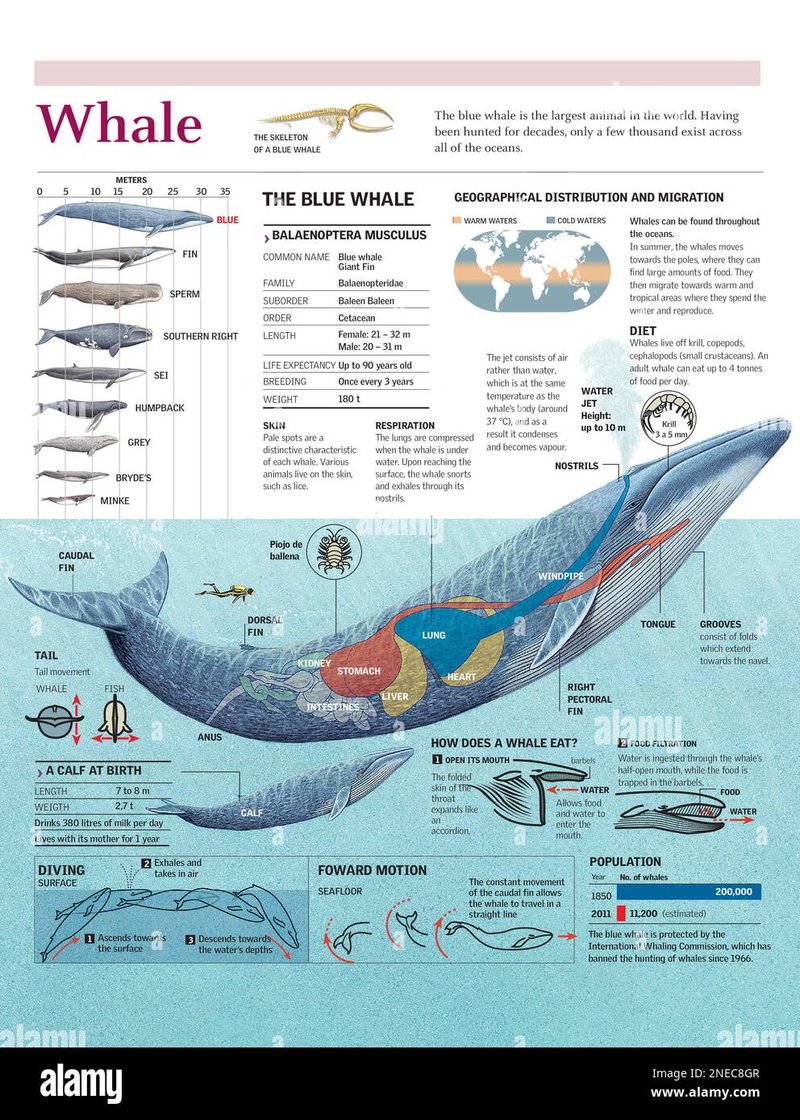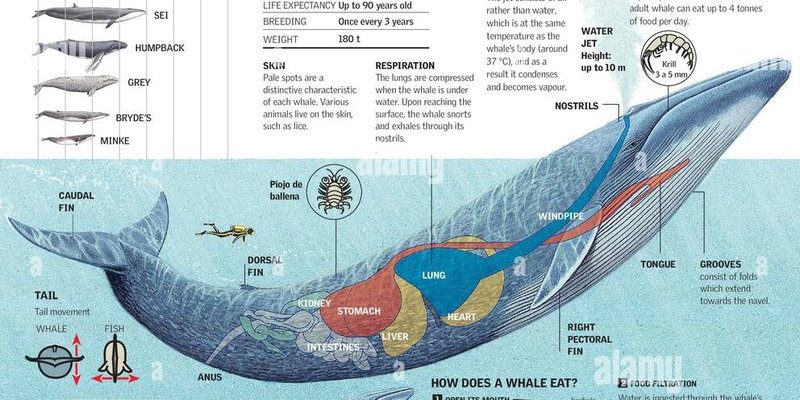
In this blog post, I’ll take you on a journey through the underwater world of the blue whale. We’ll explore what they eat, how they catch their food, and why their feeding habits are so essential to ocean ecosystems. Whether you’re a marine enthusiast or just curious about the largest animal on Earth, you’re in for an enlightening experience.
The Blue Whale’s Diet: A Krill-Centric Menu
Blue whales are often described as filter feeders, and their diet consists almost entirely of krill. These small crustaceans are plentiful in cold ocean waters, making them a perfect food source for such a massive creature. During feeding season, which typically runs from late spring to early fall, a blue whale can consume up to four tons of krill a day! To put that in perspective, it’s like you eating several hundred hamburgers in just one meal.
What’s fascinating is the sheer volume of krill. A blue whale uses its baleen plates—think of them as a giant sieve—to filter out these tiny shrimp from the water. When they take a massive gulp, they can swallow up to 80 cubic meters of water in a single mouthful. Then, by pushing the water out through the baleen, they trap the krill inside. It’s a fantastic adaptation that allows them to make the most out of their environment. Imagine going to an all-you-can-eat buffet, but instead of plates, you just need a giant net to catch your food!
How Blue Whales Feed: Filter Feeding Explained
Let’s break down how the blue whale’s feeding strategy works. We already know it involves their unique baleen plates, but the process is incredibly interesting. Generally, blue whales employ a technique called lunge feeding. This means they swim with their mouths wide open, taking in water and krill simultaneously.
Here’s how it goes down in a typical feeding session:
- The whale swims swiftly to gather a large amount of water and krill.
- Once it’s full, it closes its mouth and pushes the water out through the baleen.
- What remains is a load of krill, which the whale then swallows whole.
This feeding method is not just effective; it’s also energy-efficient. Blue whales can dive down to about 500 feet to find krill and can hold their breath for up to 30 minutes while foraging. Pretty impressive, right? This ability to swim deep allows them to access krill that less agile feeders might miss.
Seasonal Feeding Patterns of Blue Whales
Like most animals, blue whales have their own seasonal eating habits which are largely dictated by the availability of krill. They migrate to warmer waters during the winter months for breeding and then head to nutrient-rich feeding grounds in the cooler summer months.
During the feeding season, they tend to gather in areas with high concentrations of krill. For instance, you’ll often find them in the north Pacific Ocean near the coasts of California and Alaska, where upwelling currents bring nutrient-rich waters to the surface, attracting krill.
Here’s something interesting: the life cycle of krill is closely tied to the ocean’s seasonal changes. When sunlight increases in spring and summer, it promotes the growth of phytoplankton, which krill feed on. More krill mean more food for blue whales and other marine animals. This delicate balance in nature highlights how interconnected every creature is in the oceanic ecosystem.
The Role of Blue Whales in the Ecosystem
One might not think of blue whales as having a significant impact on their environment due to their size, but they play a crucial role in maintaining the balance of ocean ecosystems. Their feeding habits help regulate krill populations, which, in turn, impacts the entire food web in the ocean.
Moreover, their waste products enrich surface waters with nutrients, promoting the growth of phytoplankton. This is like a natural fertilizer that supports the entire ocean food chain. In fact, some scientists say that blue whales can help sequester carbon! When they dive deeper and return to the surface, their movement keeps biological and chemical processes going, which is vital for a healthy ocean.
When we think about conservation, understanding the importance of blue whales can’t be overlooked. Protecting their feeding grounds ensures that the entire marine ecosystem remains in balance. It’s a reminder that even giants like the blue whale play a significant role in keeping our oceans healthy.
Threats to Blue Whales and Their Feeding Habits
Despite their impressive adaptations, blue whales face several threats that impact their feeding habits. Climate change is a significant concern as it alters the distribution and abundance of krill. Warmer ocean temperatures can lead to changes in phytoplankton blooms, reducing krill populations and, subsequently, the food supply for blue whales.
Additionally, human activities like shipping traffic and commercial fishing also pose risks. Entanglement in fishing gear can injure or even kill whales, while noise pollution from boats can interfere with their communication and feeding.
Conservation efforts are crucial to ensure the survival of these majestic creatures. Supporting policies that protect marine habitats and manage shipping routes can help mitigate some of these threats. After all, if we can keep their feeding grounds safe, we can help secure the future of blue whales.
Final Thoughts on Blue Whale Feeding Habits
The diet and feeding habits of blue whales offer an incredible glimpse into the life of the ocean’s giants. From their reliance on krill to their unique feeding strategies, every aspect of their eating habits is a marvel of evolution. Watching these enormous creatures feed is a reminder of how interconnected life beneath the waves truly is.
As we continue to explore and protect our oceans, understanding the role of blue whales helps us appreciate the delicate balance of marine ecosystems. Honestly, every time I think about how they effortlessly glide through the water, filtering their meals, it makes me respect these creatures even more. They’re not just big; they’re essential to the health of our planet. So, the next time you hear about blue whales, remember their contribution goes beyond just being majestic—they’re critical players in the oceanic symphony of life.

